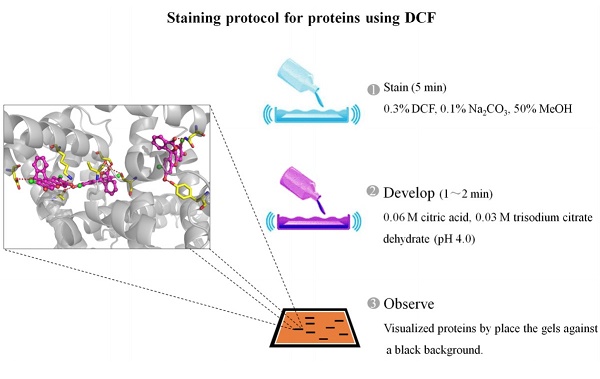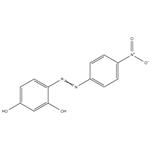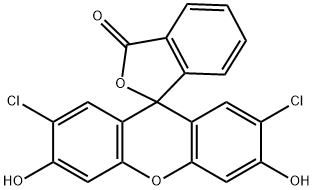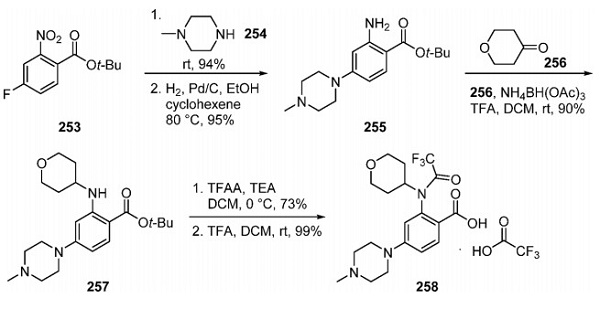The uses of 2',7'-Dichlorofluorescein
2',7'-Dichlorofluorescein (DCF) is a relatively low toxic dye widely used to measure reactive oxygen species (ROS) production to test oxidative stress levels and manufacture luminescent pigment. However, this application is suitable for this compound?
Zhang et al. report a rapid and sensitive technique for negative visualization of protein in 1D and 2D SDS-PAGE by using 2', 7'-dichlorofluorescein (DCF), which appeared as transparent and colorless bands in an opaque gel matrix background. For DCF stain, down to 0.1-0.2 ng protein could be easily visualized within 7 min by only two steps. The staining is fourfold more sensitive than that of the Eosin Y (EY) negative stain and glutaraldehyde (GA) silver stain and eightfold more sensitive than that of the commonly used imidazole-zinc (IZ) negative stain. Furthermore, DCF stains provided better reproducibility, linearity, and MS compatibility than IZ stains. In addition, the potential staining mechanism was investigated by colorimetric experiment and molecular docking, and the results demonstrated that the interaction between DCF and protein occurs mainly via van der Waals force, electrostatic interaction, and hydrogen bonding[1].

Hans et al. report that DCF finds legitimate experimental use in the generation of standard curves used to calibrate DCFH2-DA experimental results, post-chromatography estimation of carbohydrates, and in indirect fluorimetric detection in open tubular capillary chromatography (OTC-HPLC)[2]. It is, however, inappropriate to estimate ROS. The test of a 2′,7′ -dichlorodihydrofluorescein diacetate (DCFH2-DA)-based flow cytometric experiment is based on the principle that DCFH2-DA passively diffuses into the cytosol wherein its two acetate groups are cleaved by esterase enzymes to generate 2′,7′ -dichlorodihydrofluorescein (DCFH2), a non-fluorescent derivative. DCFH2 is oxidized by reactive oxygen and nitrogen species (ROS and RNS) and other oxidants into the brightly fluorescent, cell-impermeant 2′ 7′ -dichlorofluorescein (DCF). Thus, as a final product of the above pathway, it represents a quantitative albeit non-specific measure of the cell's oxidative stress degree. However, DCF is inappropriate for demonstrating ROS as it is oxidized to a non-fluorescent compound in the presence of hydroxyl radicles. Thus, if DCF is used directly, there is a decline in fluorescence in the presence of ROS. Hence, DCFH2-DA (not DCF) should be used to indicate ROS generation.
References
[1] Yuan Zhang. “A method for rapid and sensitive negative staining of proteins in SDS-PAGE using 2′,7′-dichlorofluorescein.” Proteomics 17 12 (2017).
[2] Chander Hans. “2’,7’-Dichlorofluorescein (DCF) or 2’,7’-dichlorodihydrofluorescein diacetate (DCFH2-DA) to measure reactive oxygen species in erythrocytes.” Biomedicine & Pharmacotherapy (2021): 111512.
You may like
See also
Lastest Price from 2',7'-Dichlorofluorescein manufacturers

US $0.00/KG2025-04-15
- CAS:
- 76-54-0
- Min. Order:
- 1KG
- Purity:
- 99%
- Supply Ability:
- 500000kg

US $5.00-2.00/kg2024-04-16
- CAS:
- 76-54-0
- Min. Order:
- 1kg
- Purity:
- 99%
- Supply Ability:
- g-kg-tons, free sample is available


